unit3《inbeijing》教案(冀教版初一下)doc初中英语
- 格式:doc
- 大小:22.00 KB
- 文档页数:7
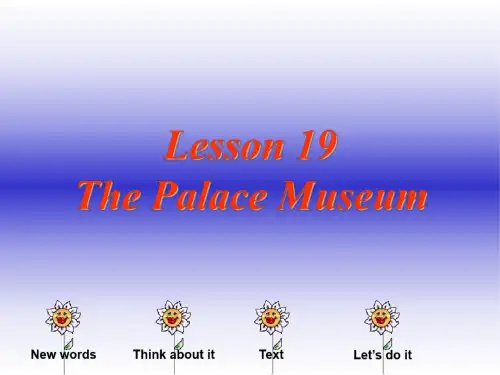
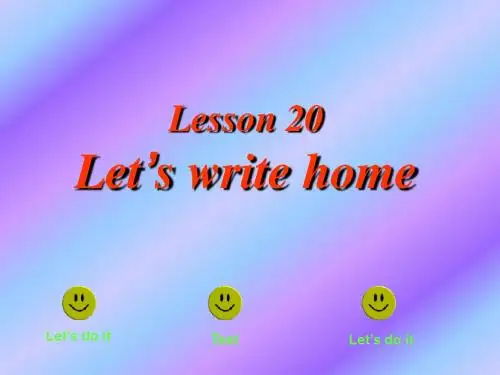
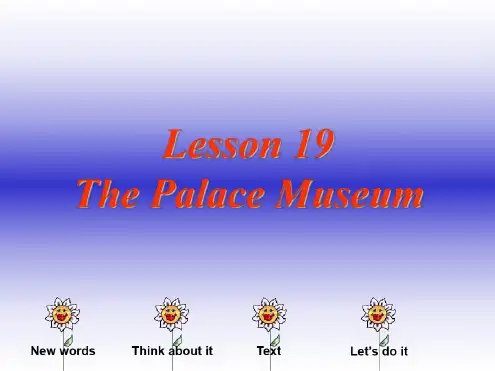
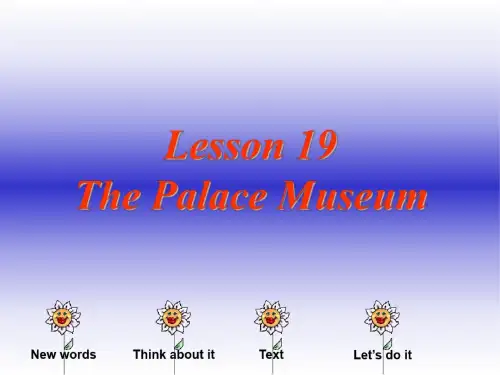
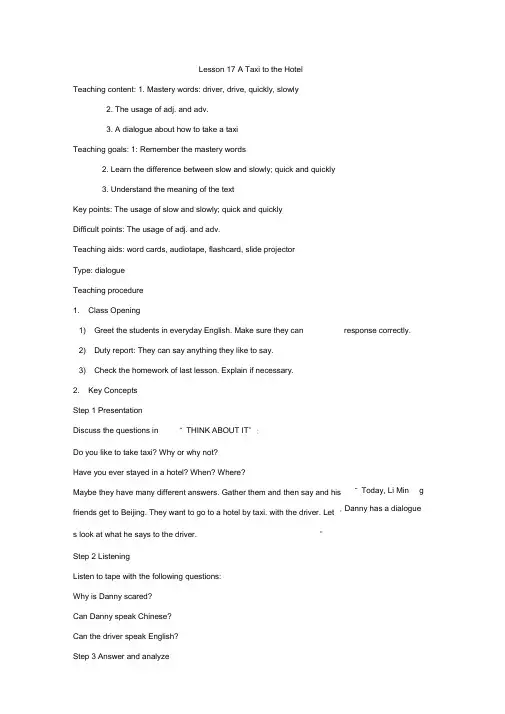
Lesson 17 A Taxi to the HotelTeaching content: 1. Mastery words: driver, drive, quickly, slowly2. The usage of adj. and adv.3. A dialogue about how to take a taxiTeaching goals: 1: Remember the mastery words2. Learn the difference between slow and slowly; quick and quickly3. Understand the meaning of the textKey points: The usage of slow and slowly; quick and quicklyDifficult points: The usage of adj. and adv.Teaching aids: word cards, audiotape, flashcard, slide projectorType: dialogueTeaching procedure1. Class Opening1) Greet the students in everyday English. Make sure they can2) Duty report: They can say anything they like to say.3) Check the homework of last lesson. Explain if necessary.2. Key ConceptsStep 1 PresentationDiscuss the questions in “ THINK ABOUT IT ”: Do you like to take taxi? Why or why not?Have you ever stayed in a hotel? When? Where?Maybe they have many different answers. Gather them and then say and his friends get to Beijing. They want to go to a hotel by taxi. with the driver. Let 's look at what he says to the driver.”Step 2 ListeningListen to tape with the following questions:Why is Danny scared?Can Danny speak Chinese?Can the driver speak English?Step 3 Answer and analyze response correctly.“ Today, Li Min gDanny has a dialogueAfter listening to the text, discuss the questions with the students. Go through the dialogue at the same time. Deal with the language points. You can use the blackboard or the slide projector. Pay attention to the different usages between slow and slowly, quick and quickly.Step 4 Listen, read and actListen to the audiotape again and let the students read after it. Then have themread the text for a few minutes and ask them to act out the dialogue in roles. Correct their pronunciation if any.Step 5 DemonstrationDemonstrate quickly and slowly by performing an action quickly and slowly as yousay the words. Point out the difference between “I amquick/slow. ” and “I am___ingquickly/slowly. ”Ask fo r volunteers to perform actions quickly and slowly. Describe the volunteers ' actions to the class. Then ask the class to describe the actions.Step 6 PracticeDivide the class into small groups. Ask each group to make a dialogue about takinga walk on a busy street in Beijing. Let them use slow and slowly, quick and quickly. Step 7 Deal with “LET'S DO IT”Work in a small group. Imagine you are a tour guide. Your group members are on a trip to Beijing. Where do they want to go? Where do you take them?Step 8 ConsolidationFill in the blanks with the correct forms of the given words.1) They eat a lot of ____ . (noodle)2) Look! They are _______ over there. (help)3) Be _______ , or we will be late.(quickly)4) The train is ________ tonight. (come)5) Thank you for ______ me. (help)6) They found that lost sheep ______ . (quickly)7) The bike is going ________ . (fast)8) That old man is walking _______ . (slow)9) That car is ______ (slowly), but this bus is ______ . (fast)10) ______ , I can ' t go down. (help)Answers: 1) noodles 2) helping 3) quick 4) coming 5) helping 6) quickly 7) fast8) slowly 9) slow, fast 10) Help3. Homework1) Understand the meaning of the text2) Remember the mastery words3) Finish the exercise of the workbook4) Preview the next lesson in the student bookLesson 18 Tian ' anmen SquareTeaching content : 1. Mastery words: laugh, fly, hard, quietly, worry, put2. Learn a dialogue about flying a kite3. Some words such as quiet and quietly, loud and loudlyTeaching goals: 1. Understand the meaning of the text2. Remember the mastery words3. Learn some words of adj. and adv.Key poin ts: 1. there be …2. the usage of adj. and adv.3. some useful words and phrasesDifficult points: the usage of adj. and adv.Teaching aids: audiotape, word cards, slide projector, a picture of Tian 'anmen Square, a kiteType: textTeaching procedure1. Opening class1) Greet the students in everyday English. Make sure they can response in correct way.2) Duty report.3) Check the homework.2. Key ConceptsStep 1 PresentationAsk the students some questions :Have you ever visited Tian ' anmen Square? If yes, when? If no, why not?Do you want to visit Tian ' anmen Square? Why or why not?You may give them some words to help them.Step 2 Listen, answer and analyzeListen to the tape with the following questions:What happens to Danny ?Can Jenny fly a kite? Can Danny fly a kite?Answer the questions together with the students and then discuss the text again.If they have any question, explain to them. Deal with the language points at the same time. Pay attention to the usage of loud and loudly, quiet and quietly.Step 3 Listen, read and actListen to the audiotape again and let the students read after it. Give them a few minutes to practice the text. Correct the pronunciation when necessary. Then have them act out the text in roles.Step 4 PracticeDivide the class into small groups. Ask each group to makeup a dialogue about walking on Tian ' anmen Square. Encourage the students to use as much vocabulary as possible from this unit (easy, hard, loudly, quietly, many, men, women, children, people).Encourage the students to be active and praise them for talking risks with English! The more they experiment, the more they learn.Step 5 Deal with “LET'S DO IT ”Work with a partner. Draw a map of Tian ' anmen Square. Describe your maps to each other. What are the people doing? Try to use loudly, quietly, slowly and quickly.Step 6 Consolidation1. Translation1) 放风筝________________ 2) 玩得痛快______________ 3) 天安门 _____________4) 看见某人放风筝_____________ 4) hurt one ' s arm _________5) Let ' s do sth. __________ 6) laugh at _______2. Fill in the blanks with the correct forms of the words given.1) We often see boys ______ football. (play)2) Tom is a ___ boy. He doe sn' t like to talk with others. (quietly)3) The street is so busy, but the people walk ____ (happy)4) I can ' t hear your words, will you please speak ________ (loud)?5) Let ' s ______ the basket on the table. (put)Step 7 If there is enough time, do the exercises in activity book.Step 8 SummaryToday we learn a text about Li Ming and his friends. They are flying kites. Thereare so many people on Tian ' anmen Square. Some people are loud and some are quiet.After class you should understand the meaning of the text and try to use loud, loudly, quiet, quietly correctly.3. Homework1) Understand the meaning of the text2) Remember the mastery words3) Finish the activity book in lesson 18Lesson 19 The Palace MuseumTeaching content: 1. mastery words: sky, film, camera, picture, smile, break, tail 2. a dialogue about taking pictures3. some useful wordsTeaching goals: 1. understand the meaning of the text2. remember the mastery words3. master the usage of some words and phrasesKey points: 1. express taking a picture2. ask permissi on to do sth.: May I …?Difficult points: 1. express what you see2. express taking a picturePreparations: a picture of the Palace Museum, a camera Teaching aids: audiotape, pictures, a camera, flashcards and slide projectorType: dialogueTeaching procedure1. Opening class1) Greet the students in everyday English and make sure they can response correctly.2) Everyday report in English.3) Check the homework and explain if necessary.2. New lessonStep 1 Lead inDiscuss the questions in “ THINK ABOUT IT”Have you ever been to the Palace Museum? If yes, when?What do you know about the Palace Museum?Do you want to live there? Why or why not?Today Li Ming and his friends go to the Palace Museum. The weather is fine. The palace is red and yellow. It ' s beautiful. They take some pictures there. Now let ' s join them.Step 2 Listen to the tape of the text with the following questions:What happens to Jenny?What' s wrong with Danny ' s nose?What do th ey do for Danny ' s nose?What' s wrong with Danny ' s tail?After listening, discuss the questions with the students. Make sure they understand the whole text. Deal with any language point at the same time. Pay attention to the usage of the following words: sunny, help sb. (to) do sth., careful, fall, breakStep 3 Listen to the audiotape again and let them read after it.Step 4. Have them read the text for a few minutes and then ask some students to act out the dialogue in roles. Pay attention to their pronunciation.Step 5 PracticeDivide the class into small groups. Ask them to make up a dialogue about visiting the Palace Museum. Encourage the students to use much new vocabulary as they can.Divide the class into small groups. Ask each group to make up a dialogue about taking pictures. Encourage the students to use as much vocabulary from this unit as possible (camera, picture, easy, hard, help, hurt, loudly, quietly, many, everyone, men, women, children, people, quickly, slowly)As the students work on this dialogue, take real pictures of each group with your camera. Later make a poster of these photos to put up in class. Do this as a class project! Help the students write English sentences under each photograph to describe the action.Step 6 Deal with “LET'S DO IT ”In a small group, write a dialogue about taking pictures. Where are you taking pictures? What funny things happen?Step 7 A test 根据首字母完成下列单词1)Can you sing? Yes, it ' s e _______ .(容易)2)Working out the problem is h ____ . (难)3)He b _____ that glass , look! He is crying. (打坏)4)Don' t w ______ , the classmates all help you. (着急)5)Bad luck! He f _______ off his bike. (掉下来)6)Now Tom is putting the f _____ in his c _______ . (装胶卷)Step 8 exerciseIf time permits, do some exercises in activity book.3. Homework1) understand the meaning of the text2) remember the mastery words3) finish the activity book of lesson 19 read the next reading in lesson 20Lesson 20 Let ' s Write HomeTeaching content: 1. mastery words: letter, dear, dad, soon, bottom, address, stamp 2. a text about writing a letter3. some useful expressionsTeaching goals: 1. understand the meaning of the text2. remember the mastery wordsKey points: learn how to write a postcardLearn how to write an envelopeDifficult points: write a letterPreparations: postcards, letters, envelopesTeaching aids: audiotape, postcards, envelopes, lettersType: textTeaching procedure1. Opening class1) Greet the students in English and make sure they can response correctly.2) Everyday report in English3) Check the homework and explain something when necessary.2. Key Concepts Step 1 PresentationAsk the following questions: Have you ever write a letter in Chinese?Do you know how to write a letter in English?Where do you put the address? Where do you put the stamp?Today we will learn how to write an English letter.Step 2 Listen and thinkListen to the tape of a letter. Then look through the text together with the students. Show the studentssome letters and envelopes and let them know how to write a letter. Learn the words: top, bottom, leftand right. Show a letter to the students when explaining.Step 4 DemonstrationUse objects in the classroom —such as the blackboard, a door or a window —to demonstrate top, left, right , bottom and corner . Ask the volunteers to show you the top, left, rightand corner of objects in the classroom.Step 5 practiceDivide the class into small groups. Ask each group to make up a dialogue about buying postcards.Why are they buying postcards? Who do they buy them for postcards?What pictures do the have ?Step 6 Play a gamePlay “ Opposites ” with the new words and the words they know.Step 7 Deal with “LET'S DO IT ”Make a postcard. Draw a picture on it including a place for writing a note, a place for the address and a place for the stamp. Write to a classmate. Do you know his or her address? Ask !Step 8 If time permits, do some exercises in the activity book.3. Homework1) Finish the remaining exercises in the activity book2) Preview the next lesson in the student bookLesson 21: Sending an E-mailTeaching Aims :1 .words: send(sent, sent), e-mail, waiter, show, straight, ball, per, hour, welcome, paper, again, all, message, why2.sentences: Go straight down this ball.I send my friend an e-mail. It is five yuan per hour.How is the weather in Canada? 通过本课文的教学使学生学习运用本课词汇、句型、理解课文内容。
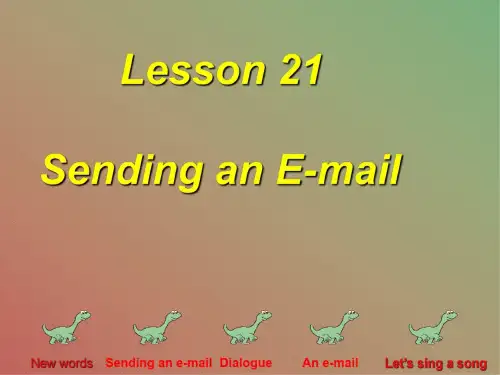
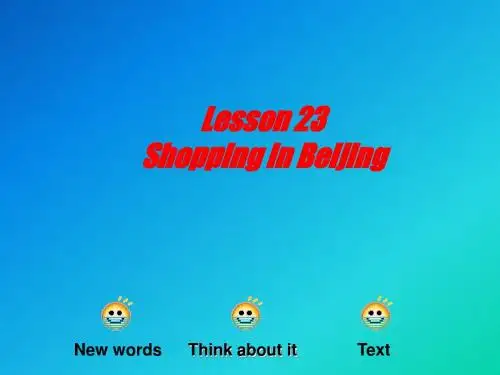
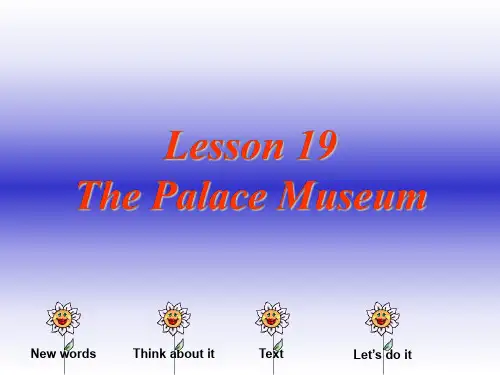
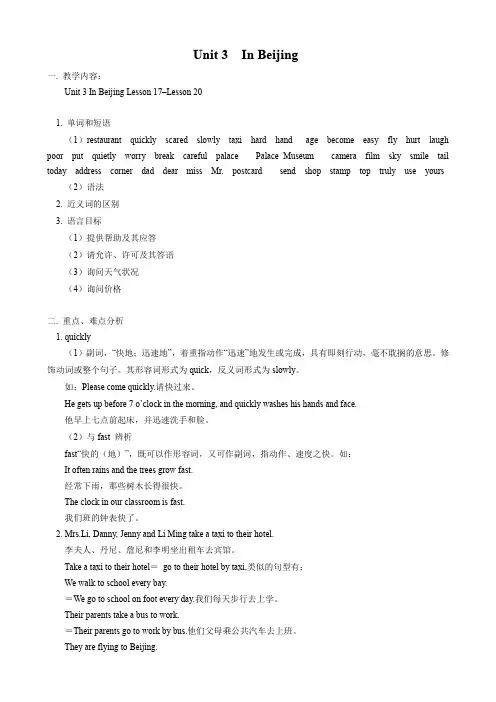
Unit 3 In Beijing一. 教学内容:Unit 3 In Beijing Lesson 17–Lesson 201. 单词和短语(1)restaurant quickly scared slowly taxi hard hand age become easy fly hurt laugh poor put quietly worry break careful palace Palace Museum camera film sky smile tail today address corner dad dear miss Mr. postcard send shop stamp top truly use yours (2)语法2. 近义词的区别3. 语言目标(1)提供帮助及其应答(2)请允许、许可及其答语(3)询问天气状况(4)询问价格二. 重点、难点分析1. quickly(1)副词,“快地;迅速地”,着重指动作“迅速”地发生或完成,具有即刻行动,毫不耽搁的意思。
修饰动词或整个句子。
其形容词形式为quick,反义词形式为slowly。
如:Please come quickly.请快过来。
He gets up before 7 o’clock in the morning, and quickly washes his hands and face.他早上七点前起床,并迅速洗手和脸。
(2)与fast 辨析fast“快的(地)”,既可以作形容词,又可作副词,指动作、速度之快。
如:It often rains and the trees grow fast.经常下雨,那些树木长得很快。
The clock in our classroom is fast.我们班的钟表快了。
2. Mrs.Li, Danny, Jenny and Li Ming take a taxi to their hotel.李夫人、丹尼、詹尼和李明坐出租车去宾馆。

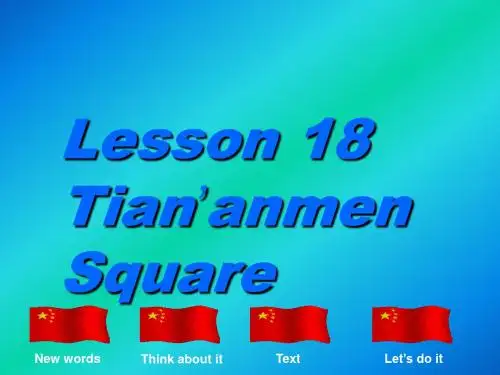
Unit 3 In Beijing一、一周内容概述1.学会there be结构的表示法及一般疑问时。
2.掌握书信、信封、贺卡及电子邮件的书写格式。
3.学会用英语请求帮助与提供帮助。
4.了解形容词与副词修饰对象的不同。
二、重难点提示(一)重点句子1.There are many cars, buses and bicycles.there be句型是“某地有某物”的意思,它表示的“有”是指“存在”。
句型中的be(is, are)必须与它后面所跟名词(主语)在“数”上保持一致。
e.g. There is a picture on the wall.墙上有幅图画。
There are some books on the desk.书桌上有些书。
当there be后面所跟名词有两个或两个以上时,动词be通常与最靠近它的名词在“数”上保持一致。
e.g. There is a coat and two shirts on the clothes line.晾衣服绳上有一件外套和两件衬衫。
There be与have/has的区别There be结构与充当实义动词的have/has都可作“有”讲,但have/has作“有”讲时,表示所有关系,即“拥有,占有”;而There be结构表示客观上的存在,不说明所有关系。
试比较:Mrs. Green has three children.(说明三个小孩归Mrs. Green所有)There are three children under the tree.(说明树下存在三个小孩)2.How’s the weather in China?中国的天气怎么样?How用来问程度,表示……怎么样?e.g. How is your teacher?你的老师怎么样啊?How about going boating tomorrow?明天去划船怎么样?我们还可以用What’s the weather like?来询问天气。
unit3《inbeijing》教案(冀教版初一下)doc初中英语学习目标1. 学会用help来要求关心。
2.了解形容词与副词修饰对象的不同。
3.学会如何样提供关心。
4.学会写信、信封、明信片以及e-mail,并通过学习写信封,学习一些方位名词。
词句语法解疑1. There are many people on the street.街上有许多人。
[P22](1)There be结构要紧是用来陈述事实的。
其差不多句式为:There be+某人/某物+某地(某时),表示:某地(某时)有某物/某人。
there为引导词,无实际意义;be动词的表现形式由其后紧跟的名词的单、复数形式决定。
假设名词是不可数名词或名词的单数形式,be动词表现为is,否那么表现为ale。
例如:①There is some money in the purse.钞票包里有些钞票。
②There are many apples in the basket.篮子里有许多苹果。
(2)There be结构中主语不在句首而在be动词的后面。
主语通常用不确定的限定词(a,some)等修饰,不用确定的限定词(如:the等)修饰。
如:墙上有幅画。
(√)There is a picture on the wall.(×)There is the picture on the wall.(3)There be句式的一样疑咨询句的语序是直截了当把be动词提早,其否定句的语序是直截了当在be动词后加not。
,假设确信句中含有some,那么在否定句和疑咨询句中some都要改为any。
对这一结构的一样疑咨询句的确信回答用:Yes,there is/are(some),否定回答为:No,there isn’t/aren’t (any)。
例如:①There are some pencils in my pencil-box. 我的铅笔盒里有些铅笔。
②There aren't any pencils in my pencil-box. 我的铅笔盒里没有铅笔。
③Are there any pencils in your pencil-box? 你的铅笔盒里有铅笔吗?Yes, there axe(some). 是的,有一些。
No, there aren't (any). 不,没有。
(4)There be结构中对数量提咨询的专门疑咨询句的语序是:专门疑咨询词+名词+be there+地点状语?其中名词假设是可数名词就一定要用复数。
在对主语提咨询时,不管主语是单数还是复数,适应上用〝What's+地点状语?〞。
例如:①There are five bottles of milk on the table. 桌上有五瓶牛奶。
②How many bottles of milk axe there on the table? 桌上有多少瓶牛奶?③There is a dog in the room. 房间里有一只狗。
④What's in the room? 房间里有什么?专门提示:There be 句式与have(has)的区不:两者都有〝有〞的意思,但have(has)意为〝某人所有〞,有所属关系,其主语是人,结构为:主语+have(has)+宾语,have位于句中;there be 结构表示〝某地或某时有〔存在〕某人或某物〞,某结构为:There be (is, are)+名词+地点状语,there be位于句首。
我们使用这两个句型时要记住表达〝归谁所有〞要用have(has),表达〝某地有〞用There be结构。
如:My mother has a sister. 我妈妈有个妹妹。
There is a knife in my mother’s hand.我妈妈的手里有把小刀。
2.Mrs Li,Danny,Jenny and Li Ming take a taxi to their hotel.李夫人、丹妮、詹妮和李明乘出租车去他们的旅社。
[P22]1 want to take a picture.我想照张相片。
[P24]take的用法专门灵活。
其后可直截了当接人或物,接地点时要用to。
在第一句中它意为〝乘车〞,在第二句中其意为〝拍照〞。
例如:①I took a taxi to the station.我乘出租车去车站。
②He took lots of pictures there.他在那儿拍了许多照片。
我们差不多学过的take还有〝带走〞,〝花费〞等含义。
例如:①My husband takes me to my office by car every morning.我先生每天早上用车带我去公司。
②It took me a lot of money to buy the house.买这幢房子花了我一大笔钞票。
It takes sb.sth.to do sth.花费某人某物做某事,是一固定结构。
3.Help!救命![P22]I can help you!我来帮你help此处是动词〝关心〞,〝挽救〞之意。
其后既可接名词也可接动词不定式,具体句式表现为help sb. , help sb.(to) do sth. , 动词不定式多不带to,但在被动语态中不能省。
例如:①Mom,I’ll help you later.妈妈,我呆会儿来帮你。
②Lucy usually helps me (to) study English.露西经常帮我学英语。
③The boy was helped by a woman to collect his scattered coins.那个男孩由一个妇人帮他捡散乱一地的钞票币。
(2)Can I help you? 你要(买点)什么吗? 长见于服务性行业。
人们也用它来询咨询是否需要关心。
May I help you? 的语气较为婉转。
4.I see some children playing.我看见一些小孩在玩。
[P23](1)see动词〝看见〞,强调看的结果。
其后既可接动词不定式又可接动名词,see sb. dosth.意为:〝看见……(做)……〞,表示自动作开始看到终止。
see sb doing意为〝看见……(正在做)……〞,侧重于动作正在进行。
例如:①I saw him go into the shop just now.我刚才看见他进了那家商店。
②I saw a plane flying to the north.我看见一架飞机正朝北飞去。
(2)See可作〝明白,明白得〞之意。
相当于know,understand。
例如:Do you see what I mean? 你了解我的意思吗?(3)see还可作〝观光,观赏〞之意。
I saw a Beijing opera in Shanghai.我在上海看了一场京戏。
5.Don't worry.不着急。
[P23](1)worry动词,意为〝担忧〞,做此意讲时,其后不直截了当接宾语,先接介词〝about或over'’。
例如:Look after yourself well,don't worry about me.照管好你自己,不要担忧我。
(2)worry也有〝使(某人)担忧,使苦恼〞的意思。
其后可直截了当接宾语。
例如:What's worrying you?你在担忧什么?6.Now I'm putting film in my camera.我现在正在往我的照相机里上胶卷。
[P24]put...in...固定短语,意为〝把……放入……〞。
例如:He's putting his English book in his schoolbag.他正在把他的英语书放进他的书包。
put.还能够与其他的方位介词连用。
例如:put… on〝把……放到……上〞,put…under〝把……放到……下〞等等。
7. Sit in front of the window. 坐在窗户的前面。
[P24](1)front名词〝前部〞,例如::the front of the ear 车子的前部 a Seat in the front 前面的座位(2)in front of〝在……〔整体外部〕的前面〞,表方位的介词短语,不同于in the front of.例如:There is a park in front of the house. 在那房子前面有个公园。
in the front of 〝在……〔整体内部〕的前面〞,表方位的介词短语。
例如:She sat in the front of the bus. 她坐在公共汽车的前面。
8. How much is the stamp, please?请咨询那张邮票多少钞票?[P26](1) Ho much 此处用于对价格提咨询。
be动词可表现为is或are。
例如:How much are the apples? 这些苹果多少钞票?.(2) How much 也能够用来对不可数名词的数量提咨询,其后要接该名词。
例如::How much money do you have? 你有多少钞票?。